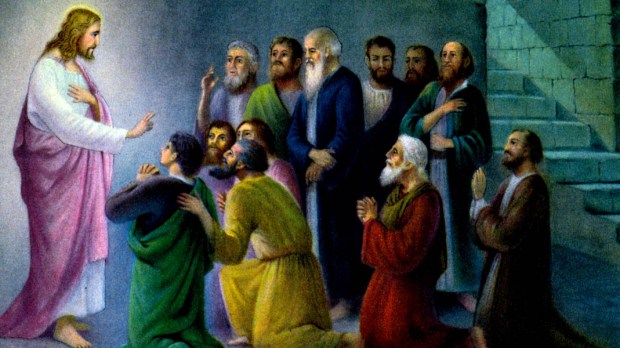Lenten Campaign 2025
This content is free of charge, as are all our articles.
Support us with a donation that is tax-deductible and enable us to continue to reach millions of readers.
A wag once suggested the first two people to doubt the virgin birth were Mary and Joseph. Joseph was going to break his betrothal and put a pregnant Mary “away quietly,” and Mary famously pestered Archangel Gabriel with “How can this be?” (If you’ve ever said it, relax. You’re just quoting the Bible.)
But if one were to ask who first doubted the Resurrection, well, that would be all the disciples. So, just to be clear, no, it wasn’t only “Doubting” Thomas. He just happens to be the disciple who got the most press out of it. The others, too, were frank scoffers, at first.
But they had a history of this, the disciples did. In turn the Synoptic Gospels — Matthew, Mark, Luke — describe the disciples as “fearful,” “confused,” “unknowing,” and “unbelieving,” and do it more than once. One particularly jarring episode (Mark 9) has a father reporting to Jesus that his disciples had tried but failed to rid his son of a spirit. Would Jesus come do what they could not? Jesus, clearly exasperated, mumbles about an “unbelieving and perverse generation,” his disciples from the context. Then he asks himself, “How long shall I stay with you and put up with you?” Then, curtly to the father, “Bring your son here.”
I don’t remember who first suggested it, but the Gospel of Mark might be subtitled “the Stupid, Stubborn, Unbelieving Disciples Gospel.” Jesus says something to his disciples and almost immediately an author’s note shows up: “But the disciples did not understand what this meant.” (Mk 9:45)
This, by the way, was said right after Jesus told them, “Listen carefully to what I am about to tell you: The Son of Man is going to be betrayed into the hands of men” and just before they broke into a squabble about which of them had the best chance of becoming just the greatest disciple like ever.
This is how St. Luke portrays the disciples’ first reaction to the news of an empty tomb, carried by Mary Magdalene and other women: It was “an idle tale, and they did not believe them.”
Jesus sternly confronts – that’s the word – the disciples on the first evening of the Resurrection, Mark 16. The disciples by now have heard from Mary Magdalene and the women, the first to the tomb, and ignored them. But they have also heard from the two additional disciples who encountered Jesus (presumed to be the two returning from Emmaus), and they discounted that as well.
Now Jesus finds the Eleven and he gets right in their face: “… he rebuked them for their lack of faith and their stubborn refusal to believe those who had seen him after he had risen.”
The accounts of doubting disciples aren’t over. St. Matthew’s Gospel (28:17ff) carries the scene of The Great Commission. “When [the disciples] saw him, they worshiped him; but some doubted. Then Jesus came to them …” The force of the grammar seems to say exactly that. But what does that mean, some doubted?
Yet, in St. Mark, to these stubborn, unbelieving disciples Jesus issues a command, “Go into all the world and preach the good news to all creation.” (Mk 16:15)
Wherever else the Gospels may disagree — in detail or timing, or even the actors involved — they agree always on the extent of the thickheaded obtuseness of the disciples, their inability to understand was what plainly being said, and their repeated failure of faith.
The Synoptic Gospels, Matthew, Mark, and Luke, tend to race through the story of Jesus, Mark especially. Mark is all shake-and-bake with events and conversations, everything. The message is immediate, right now, act now, follow, now. Matthew and Luke follow their own theological themes and emphases. Their gospels are longer largely because they relate more stories, but nonetheless they stay to the same rapid pace.
But the Gospel of John lingers over the Resurrection as it lingers over other crucial episodes. The denial of Peter, for instance, positively crawls. It slows down, going detail by excoriating detail until we are nearly weeping with Peter himself.
John does the same thing with the resurrected Jesus and his disciples. Beginning with Mary Magdalene to the catch of fish and finally to Peter’s reinstatement – four times Jesus appears to one or two or all of his disciples. Each time he leaves them more confident, comforted; more resolved, more prepared for the long, long witness to follow. He does not rebuke them, never belittles their small faith, and leaves them ever strengthened.
Ask me, I’ll read John for the Resurrection account when I’m feeling good, confident, firm. I’ll read the others when my faith needs a little kick.

